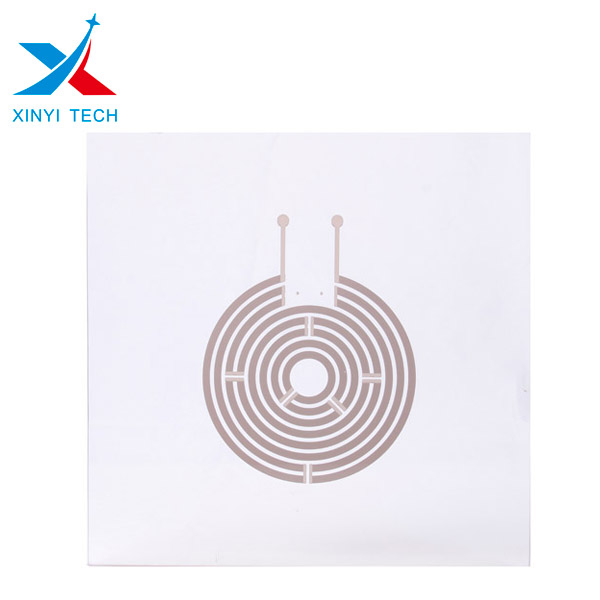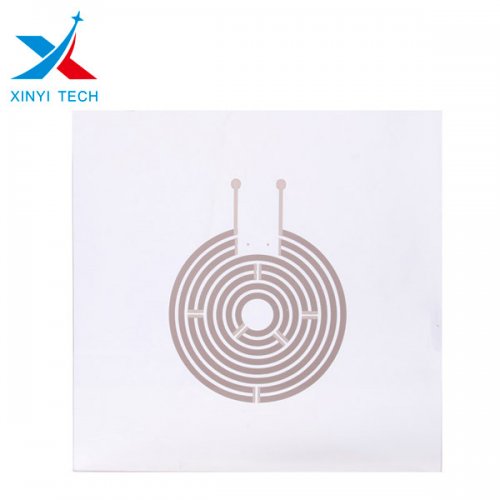Graphene is a single-layer two-dimensional honeycomb lattice of carbon atoms connected by sp² hybridization A new material for structure . Graphene has excellent optical, electrical, and mechanical properties, and has important application prospects in materials science, micro-nano processing, energy, biomedicine, and drug delivery, and is considered to be a revolutionary material in the future. Physicists Andrei Geim and Konstantin Novoselov of the University of Manchester, UK, were awarded the 2010 Nobel Prize in Physics for their successful separation of graphene from graphite by micromechanical exfoliation. The common powder production methods of graphene are mechanical exfoliation method, redox method, SiC epitaxial growth method, and thin film production method is chemical vapor deposition (CVD).
Research History
In fact, graphene already exists in nature, but it is difficult to peel off the single-layer structure. Graphene is layered up to form graphite, and graphite 1 mm thick contains about 3 million layers of graphene. A pencil scratches lightly on the paper, and the traces left may be several layers or even just one layer of graphene.
In 2004, two scientists from the University of Manchester, Andre Geim and Konstantin Novo Konstantin Novoselov found that they could get thinner and thinner graphite flakes in a very simple way. They exfoliated graphite flakes from highly oriented pyrolytic graphite, then glued both sides of the flakes to a special tape, and by tearing the tape, the graphite flakes were split in two. Keep doing this, and the flakes get thinner and thinner, and they get a flake made of just one layer of carbon atoms, which is graphene. They jointly won the Nobel Prize in Physics in 2010. The common powder production methods of graphene are mechanical exfoliation, redox, and SiC epitaxial growth, and the thin film production method is chemical vapor deposition (CVD).
Since then, new methods of preparing graphene have emerged one after another. In 2009, Andrei Geim and Konstantin Novoselov discovered the integer quantum Hall effect and the quantum Hall effect at room temperature in single-layer and double-layer graphene systems, respectively. Received the 2010 Nobel Prize in Physics. Before the discovery of graphene, most physicists believed that thermodynamic fluctuations did not allow any two-dimensional crystals to exist at finite temperatures. So, its discovery immediately shook the academic community of condensed matter physics. Although both theoretical and experimental communities believe that perfect two-dimensional structures cannot exist at non-zero degrees, single-layer graphene can be prepared experimentally.
On March 31, 2018, China's first fully automatic mass production of graphene organic solar optoelectronic device production line was launched in Heze, Shandong. The project mainly produces graphene organic solar cells (hereinafter referred to as graphene OPV) that can generate electricity in low light, which solves the three major problems of solar power generation: application limitation, sensitivity to angles, and difficulty in modeling.
On June 27, 2018, China Graphene Industry Technology Innovation Strategic Alliance Product Naming Guidelines. This standard specifies the naming method of new products related to graphene materials.
Physical and chemical properties:
Physical Properties-Internal Structure
The arrangement of carbon atoms in graphene is the same as the single atomic layer of graphite, which forms bonds with sp2 hybrid orbitals, and has the following characteristics : A carbon atom has 4 valence electrons, of which 3 electrons generate sp2 bonds, that is, each carbon atom contributes an unbonded electron located in the pz orbital, and the pz orbital of the adjacent atom is perpendicular to the plane to form a π bond, the new The formed π bonds are in a half-filled state. The study confirmed that the coordination number of carbon atoms in graphene is 3, the bond length between every two adjacent carbon atoms is 1.42 × 10-10 meters, and the angle between the bonds is 120°. In addition to the honeycomb layered structure in which σ bonds link with other carbon atoms to form hexagonal rings, the pz orbitals of each carbon atom perpendicular to the layer plane can form large π bonds (similar to benzene rings) of polyatoms throughout the entire layer, Therefore, it has excellent electrical conductivity and optical properties.
Mechanical Properties
Graphene is known to be one of the strongest materials, and also has good toughness The theoretical Young's modulus reaches 1.0TPa, and the inherent tensile strength is 130GPa. The reduced graphene modified by hydrogen plasma also has very good strength, and the average modulus can be as large as 0.25TPa. The graphite paper composed of graphene sheets has many pores, so the graphite paper is very brittle. However, after oxidation to obtain functionalized graphene, the graphite paper made of functionalized graphene is extremely strong and tough.
Electronic effect
The carrier mobility of graphene at room temperature is about 15000cm2/(V s), which exceeds that of silicon It is 10 times that of the material and more than twice that of indium antimonide (InSb), a substance known to have high carrier mobility. Under some specific conditions such as low temperature, the carrier mobility of graphene can even be as high as 250000 cm2/(V s). Unlike many materials, the electron mobility of graphene is less affected by temperature changes. At any temperature between 50 and 500K, the electron mobility of single-layer graphene is around 15000cm2/(V s).
In addition, the half-integer quantum Hall effect of electron carriers and hole carriers in graphene can be observed by changing the chemical potential through the action of an electric field, and scientists have observed graphene at room temperature of this quantum Hall effect. Carriers in graphene follow a special quantum tunneling effect and do not produce backscattering when encountering impurities, which is the reason for graphene's localized superconductivity and high carrier mobility. Electrons and photons in graphene have no rest mass, and their velocities are constants that are independent of kinetic energy.
Graphene is a zero-distance semiconductor because its conduction and valence bands meet at the Dirac point. The marginal Brillouin zone of the momentum space at the six positions of the Dirac point is divided into two sets of equivalent triplets. In contrast, the dominant point of conventional semiconductors is usually Γ, with zero momentum.
Thermal performance
Graphene has very good thermal conductivity. The thermal conductivity of pure defect-free single-layer graphene is as high as 5300W/mK, which is a carbon material with high thermal conductivity, which is higher than that of single-wall carbon nanotubes (3500W/mK) and multi-wall carbon nanotubes (3000W/mK). When it is used as a carrier, the thermal conductivity can also reach 600W/mK. In addition, the ballistic thermal conductivity of graphene can lower the lower limit of the ballistic thermal conductivity of carbon nanotubes per unit circumference and length.
Optical Properties
Graphene has very good optical properties, with an absorption rate of about 2.3% in a wide wavelength range, and it looks almost transparent of. In the range of several layers of graphene thickness, the absorption rate increases by 2.3% for each additional layer of thickness. Large-area graphene films also have excellent optical properties, and their optical properties vary with the thickness of graphene. This is the unusual low-energy electronic structure of monolayer graphene. Applying voltage to the double-gate bilayer graphene field effect transistor at room temperature can adjust the band gap of graphene between 0 and 0.25 eV. Applying a magnetic field, the optical response of graphene nanoribbons can be tuned to the terahertz range.
When the intensity of the incident light exceeds a certain critical value, the absorption of graphene will reach saturation. These properties allow graphene to be used as passively mode-locked lasers. This unique absorption can become saturated when the input light intensity exceeds a threshold, which is called the saturation effect, and graphene can saturate easily under the strong excitation visible in the near-infrared region, due to the ring-shaped optical absorption and zero bandgap. Due to this special property, graphene has a wide range of applications in ultrafast photonics. Optical responses of graphene/graphene oxide layers can be tuned electrically. Under denser laser illumination, graphene may possess an optical nonlinear Kerr effect with a nonlinear phase shift.






